CNC machining services forUSA
Submit your order for premium custom parts
CY's CNC machining services, in USA , makes quality components for your requiements.

We are DongGuan ChengYang, a leading provider of CNC machining services for Minnesota. With years of expertise and a commitment to quality, we pride ourselves on delivering precision-engineered components to meet our clients' specific needs.
Our state-of-the-art facilities and skilled technicians ensure that we can handle projects of any size and complexity. From prototype development to mass production, we offer a wide range of CNC machining services to support the manufacturing industry in Minnesota. Whether you require milling, turning, or grinding services, we have the capabilities to deliver top-notch results.
At DongGuan ChengYang, we understand the importance of meeting deadlines and adhering to strict quality standards. Our dedication to excellence and customer satisfaction sets us apart as a trusted partner for CNC machining services in Minnesota. Contact us today to learn more about how we can assist with your machining needs.
CNC Machining services
Dongguan Chengyang are equipped with 3-axis, 4-axis, and 5-axis CNC milling machines, permits us to optimally processing part ranging from straightforward to intricate.
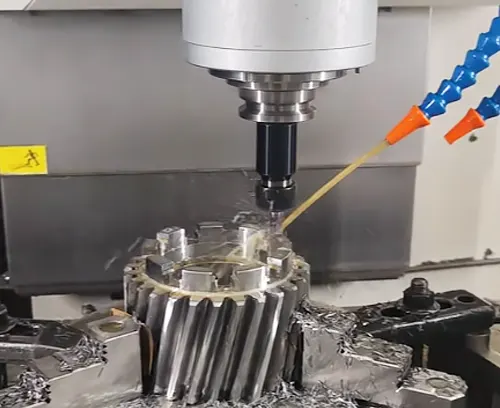
CNC Milling
Machining with precision using CNC equipment, producing high-performance parts efficiently for our clients.
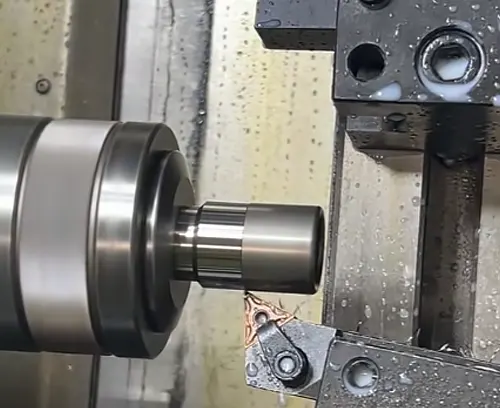
CNC Turnning
Our CNC lathes, turning centers, and mill-turn equipment enable us withefficiency to fabricate a broad range of parts for every patron.
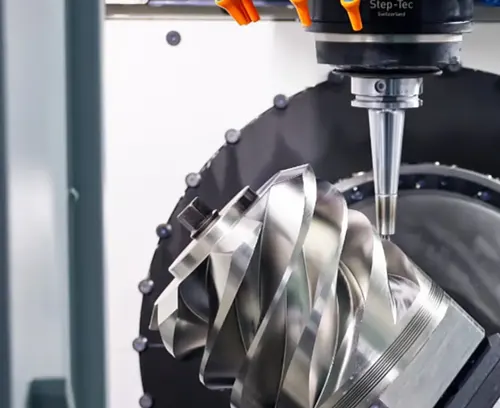
5 Axis CNC Milling
Provide 5-axis machining solutions for intricate and precision-engineered components. Featuring rapid production, it's perfect for intricate designs.

Precision Machining
Deliver high-precision machining by integrating various processes to optimize output, reliability, and quicken production cycles, guaranteeing reliable, high-quality output.
Capabilities
Maximum Dimensions
2000mm x 1500mm x 800mm or 78.7 x 59 x 31.5 inches.
Maximum Dimensions
2000mm x 1500mm x 800mm or 78.7 x 59 x 31.5 inches.
Support Threading
Prefer Metric Threads, Also Support UNC and UNF threads.
Wall Thickness
Generally, a workable minimum wall thickness is 0.5mm for metals and 1.0mm for plastics.
Material Available
Metals: Aluminum, Copper, Brass, Bronze, Stainless Steel, Carbon Steel, Steel Alloy, Titanium, and plastic, etc .
Tolerances
Dimension: Depends on the size and material, generally +/- 0.01mm or 0.0004 inches
Common CNC DFM
Optimizing a product with DFM reduces the chance of manufacturing errors and helps keep production expenses down.

Sharp Corner

Undercut

Undercut

Thick Walls

Tolerance Guide

Small Hole

Narrow Area
Metal Materials
We offer instant quotes for over 100 metals and help compare processing material costs.Easily get instant pricing for over 100 metals and review cost differences in processing.
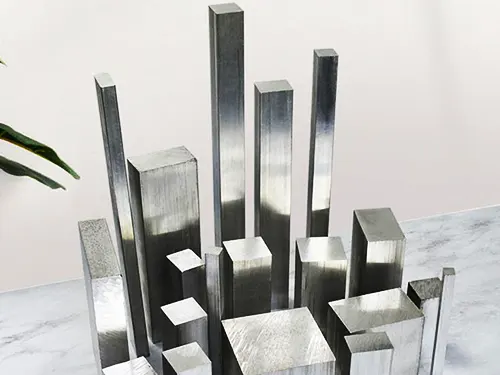
Aluminum
Aluminum is a popular material used in CNC machining due to its lightweight yet durable nature, making it ideal for a wide range of applications. It is known for its high strength-to-weight ratio, corrosion resistance, and excellent thermal and electrical conductivity. Some common types of aluminum used in CNC machining include 6061 aluminum alloy, which is versatile and suitable for various applications; 7075 aluminum alloy, known for its high strength and toughness; and 2024 aluminum alloy, which offers good machinability and fatigue resistance. These materials are widely used in industries such as aerospace, automotive, electronics, and more, making aluminum a crucial element in the CNC machining process.
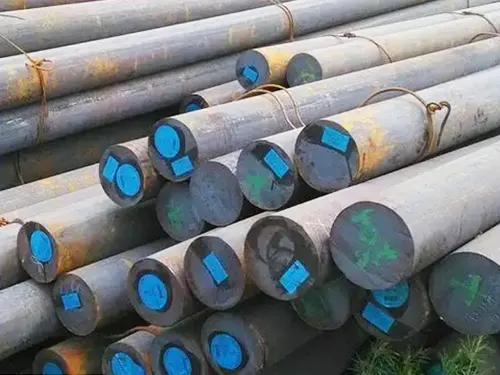
Carbon Steel
Carbon steel is a popular material used in CNC machining due to its durability, strength, and affordability. It is an alloy of iron and carbon, with varying amounts of other elements such as manganese, silicon, and sulfur. Some common types of carbon steel include low carbon steel, medium carbon steel, and high carbon steel. Low carbon steel, also known as mild steel, is easy to work with and weld, making it suitable for a wide range of applications. Medium carbon steel is stronger and more durable, making it ideal for machinery parts and tools. High carbon steel is the hardest and strongest type, often used in blades and cutting tools. Overall, carbon steel is a versatile and reliable material for CNC machining projects.
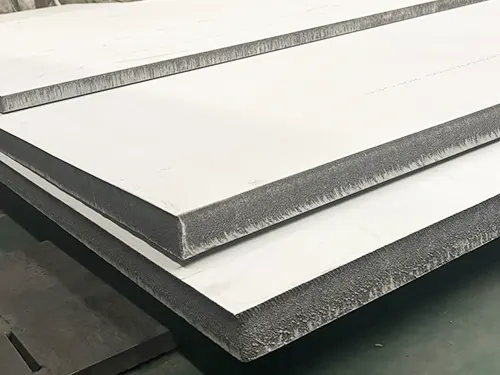
Stainless Steel
Stainless steel is a versatile material commonly used in CNC machining due to its exceptional strength, corrosion resistance, and aesthetic appeal. It is composed of iron, carbon, and a minimum of 10.5% chromium, which provides its unique properties. Common types of stainless steel for CNC machining include 303 stainless steel, which is easily machinable and ideal for applications requiring good corrosion resistance; 304 stainless steel, known for its excellent weldability and formability; and 316 stainless steel, which offers superior corrosion resistance, making it suitable for harsh environments. Other commonly used stainless steel materials in CNC machining are 17-4 PH stainless steel, 410 stainless steel, and 440C stainless steel, each with their own distinct properties and applications.
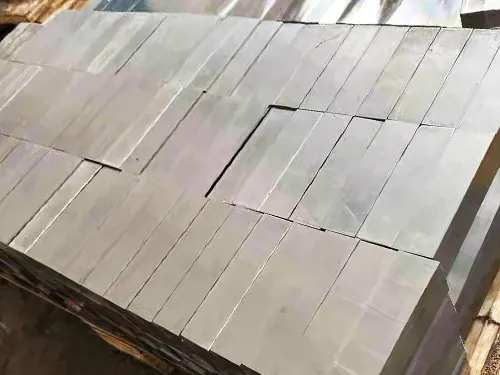
Tool Steel
Tool steel is a type of material commonly used in CNC machining due to its high durability, toughness, and wear resistance. These properties make tool steel ideal for creating cutting tools, molds, and dies in the machining process. Some common types of tool steel materials used in CNC machining include D2, A2, O1, M2, and S7. D2 tool steel is known for its high wear resistance and retention of hardness, making it suitable for making punches and dies. A2 tool steel is popular for its toughness and versatility in creating intricate components. O1 tool steel offers good machinability and wear resistance, while M2 tool steel is used for high-speed cutting tools. S7 tool steel is valued for its shock resistance and toughness in creating cold work tools.
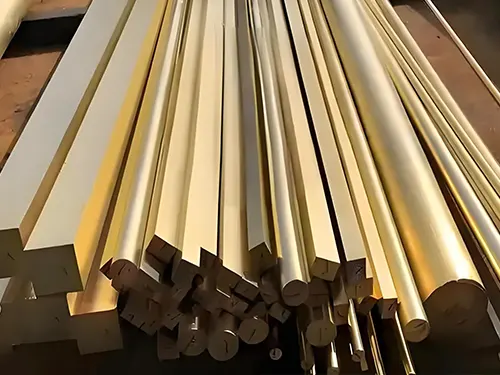
Brass
Brass is a commonly used material in CNC machining due to its excellent machinability, corrosion resistance, and aesthetic appeal. Brass is a non-ferrous metal composed primarily of copper and zinc, which gives it a yellowish hue. Common types of brass used in CNC machining include C360 (free-cutting brass), C464 (naval brass), and C260 (cartridge brass). C360 brass is known for its high machinability and excellent formability, making it a popular choice for intricate parts. Naval brass, or C464, is widely used in marine applications due to its resistance to corrosion in seawater. Cartridge brass, or C260, is often utilized in the production of ammunition casings. The versatility and durability of brass make it a preferred material in CNC machining for various industries.
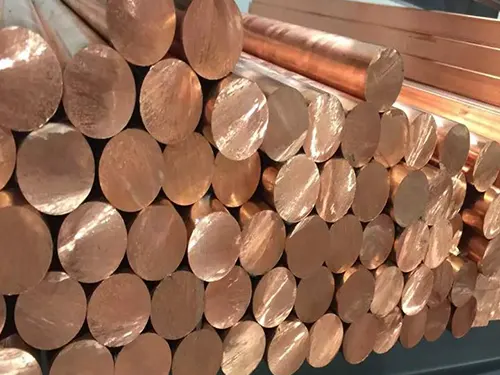
Copper
Cooper is a common material used in CNC machining due to its excellent machinability and conductivity properties. It is often chosen for its ability to produce intricate designs and high precision parts. Some common types of materials used for CNC machining include brass, aluminum, stainless steel, titanium, and plastics such as acrylic and nylon. Each material has its own set of properties that make it suitable for specific applications. Brass, for example, is known for its corrosion resistance and aesthetic appeal, making it a popular choice for decorative components. Aluminum is valued for its lightweight and strong characteristics, ideal for aerospace and automotive industries. Stainless steel is preferred for its durability and strength, commonly used in medical devices and equipment. Titanium is well-regarded for its high strength-to-weight ratio and biocompatibility, making it an ideal choice for aerospace, medical, and automotive applications.

Titanium
Titanium is a popular material used in CNC machining due to its exceptional strength-to-weight ratio, corrosion resistance, and biocompatibility. This makes it ideal for a wide range of applications, from aerospace components to medical implants. Common types of titanium used in CNC machining include Grade 5 titanium (Ti-6Al-4V), which is the most widely used titanium alloy due to its high strength and toughness. Grade 2 titanium, known for its excellent weldability and formability, is often used in marine and chemical processing applications. Titanium Grade 9 (Ti-3Al-2.5V) is another common option, prized for its high strength and heat resistance. Overall, titanium’s unique properties make it an excellent choice for various machining needs.
Plastic Materials
We offer instant quotes for over 200 plastics and help compare processing material costs.
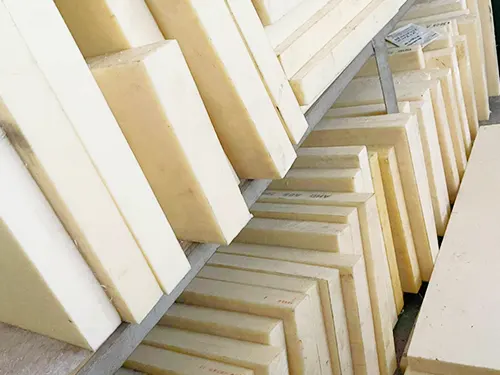
ABS
ABS, or Acrylonitrile Butadiene Styrene, is a common thermoplastic used in CNC machining due to its excellent mechanical properties and ease of processing. One of the main advantages of ABS is its high strength and impact resistance, making it a suitable material for producing functional prototypes and end-use parts. Additionally, ABS is known for its good chemical resistance and ability to be easily post-processed through methods such as sanding, painting, and welding. However, ABS also has its disadvantages. It tends to warp during the machining process, especially in large, thick parts, requiring the use of a heated build platform or enclosure to minimize this issue. Furthermore, ABS has poor UV resistance and can degrade when exposed to sunlight over time. Despite these drawbacks, ABS remains a popular choice for CNC machining applications.
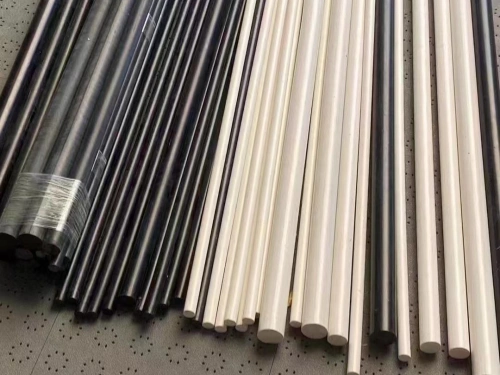
PMMA
PMMA, also known as acrylic or acrylic glass, is a versatile material commonly used in CNC machining for its clarity, durability, and ease of machining. Its advantage lies in its excellent optical properties, making it ideal for applications requiring transparency, such as in automotive headlights or medical devices. Additionally, PMMA is lightweight and resistant to shattering, making it a safer alternative to glass. However, its main disadvantage is its tendency to scratch easily, requiring extra care during handling and maintenance. Despite this drawback, PMMA remains a popular choice for CNC machining due to its versatility and cost-effectiveness in producing a wide range of products.
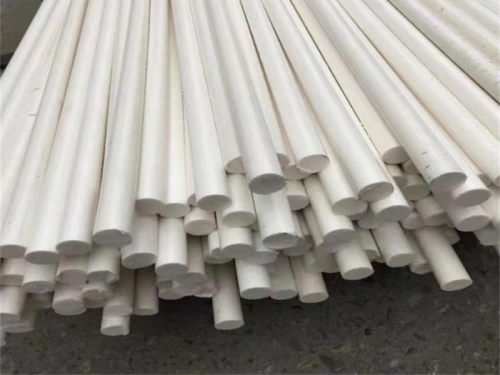
PE
PE, or Precision Engineering, for CNC machining involves the use of advanced technology and specialized tools to create highly accurate and intricate parts with tight tolerances. The main advantage of PE for CNC machining is its ability to produce precise components with minimal error, resulting in high-quality finished products. This is particularly beneficial in industries such as aerospace, automotive, and medical, where precision is crucial. However, the downside of PE for CNC machining is that it can be more time-consuming and costly compared to traditional machining methods. Additionally, the complex nature of PE may require highly skilled operators and engineers to ensure the successful completion of projects. Despite these challenges, the benefits of precision engineering in CNC machining make it a valuable tool for industries that demand utmost accuracy and precision.
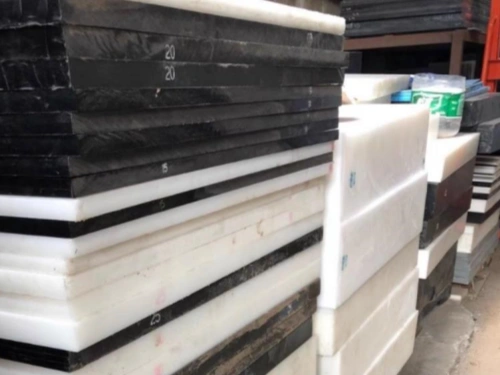
Nylon
Nylon is a common material used in CNC machining due to its excellent combination of strength, flexibility, and durability. It is often chosen for its high impact resistance and ability to withstand wear and tear, making it ideal for producing parts that need to resist constant pressure or friction. Nylon is also known for its low friction coefficient, which reduces the need for lubrication in moving parts. However, one disadvantage of nylon in CNC machining is its tendency to absorb moisture, which can affect the dimensional stability of the final product. Additionally, nylon can be more difficult to machine than other materials, requiring specific cutting tools and techniques to prevent melting or chipping. Despite these drawbacks, nylon remains a popular choice for various CNC machining applications due to its unique combination of properties.
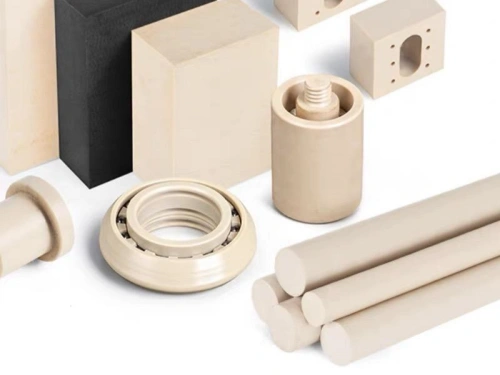
PEEK
PEEK, which stands for Polyetheretherketone, is a high-performance thermoplastic material commonly used in CNC machining due to its excellent mechanical properties. Its advantages include high temperature resistance, chemical resistance, and exceptional dimensional stability. PEEK is also known for its strength and stiffness, making it a popular choice for applications that require durability and precision. However, one of the main disadvantages of PEEK is its high cost compared to other thermoplastics, which may increase overall production expenses. Additionally, PEEK is known to be challenging to machine due to its toughness and abrasiveness, requiring specialized tools and techniques. Despite its drawbacks, the unique properties of PEEK make it a valuable material for manufacturing high-quality components in various industries.
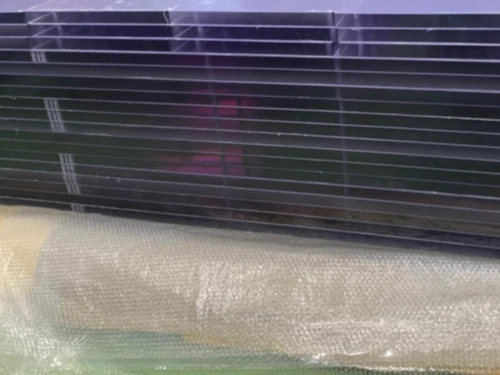
PC
PC, or Personal Computer, is a crucial component in CNC machining. It is used to run CAD/CAM software programs that generate toolpaths for the CNC machine to execute. The advantage of using a PC for CNC machining is the ability to design complex parts with precision and accuracy. The software allows for intricate details to be programmed into the machine, resulting in high-quality finished products. Additionally, PCs can store vast amounts of data, making it easy to save and recall designs for future use. However, a disadvantage of using a PC for CNC machining is the potential for system crashes or software malfunctions, leading to downtime and delays in production. Nevertheless, with proper maintenance and backup systems in place, the benefits of using a PC for CNC machining far outweigh the drawbacks.
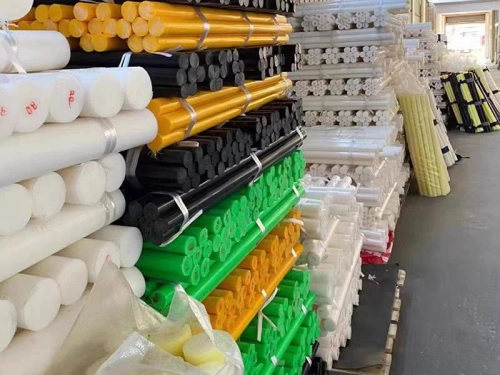
PP
PP (Polypropylene) is a common material used in CNC machining due to its versatility and cost-effectiveness. One of the main advantages of using PP for CNC machining is its excellent chemical resistance, making it suitable for a wide range of applications in various industries. Additionally, PP is known for its high strength-to-weight ratio, which allows for the production of durable and lightweight parts. However, one major disadvantage of PP is its relatively low heat resistance compared to other materials. This can limit its usability in certain high-temperature applications. Overall, PP remains a popular choice for CNC machining due to its favorable mechanical properties, ease of machining, and affordability.
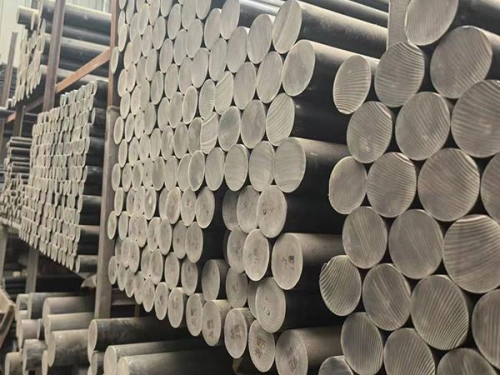
PET
PET, or Polyethylene Terephthalate, is a common material used in CNC machining due to its durability and ease of machining. One of the main advantages of PET for CNC machining is its high strength-to-weight ratio, making it ideal for applications where a lightweight yet strong material is needed. PET also has good chemical resistance, making it suitable for a wide range of industries. However, PET does have its disadvantages. It has a tendency to melt at high temperatures, which can lead to poor surface finishes and dimensional inaccuracies. Additionally, PET can be prone to warping, especially when subjected to high stress or temperature fluctuations. Despite these drawbacks, PET remains a popular choice for CNC machining due to its overall versatility and cost-effectiveness.
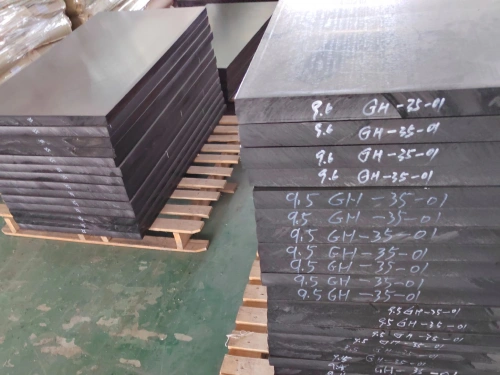
POM
POM, or Program Optimization Module, is a crucial tool in CNC machining that helps streamline the programming process by automatically optimizing tool paths and reducing machining time. The main advantage of POM is its ability to improve efficiency and productivity by eliminating unnecessary tool movements and reducing cycle times. By optimizing cutting paths, POM also helps minimize tool wear and prolong tool life, leading to cost savings in the long run. However, one disadvantage of POM is that it can be complex and challenging to learn for beginners, requiring a solid understanding of CNC programming and machining principles. Despite this drawback, the benefits of using POM in CNC machining operations make it a valuable asset for manufacturers looking to increase their efficiency and profitability.
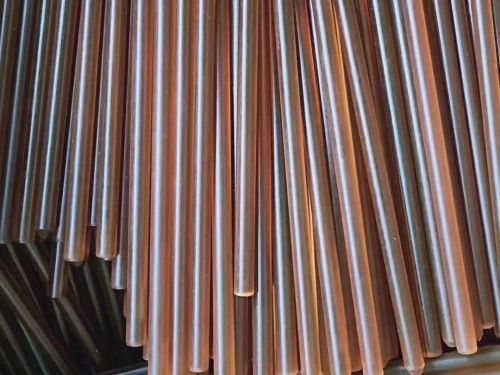
PVC
PVC, or polyvinyl chloride, is a widely used material in CNC machining due to its versatility and cost-effectiveness. Its advantages include high strength, excellent chemical resistance, and ease of machining. PVC is also lightweight and can be easily molded into complex shapes, making it ideal for a wide range of applications such as signage, prototyping, and fixtures. However, PVC does have its disadvantages. It can release harmful fumes when machined at high speeds, requiring proper ventilation and safety precautions. Additionally, PVC is not as resistant to high temperatures as other materials, limiting its use in certain applications. Overall, PVC remains a popular choice for CNC machining due to its affordability and versatility, despite its drawbacks.
Surface Finishes
With extensive know-how, our professionals deliver consistent, high-quality surface treatments.
| Name | Description | Materials | Color | Texture | More |
|---|---|---|---|---|---|
| Brushing | Brushing is the act of cleaning the teeth and gums using a toothbrush and toothpaste. It helps to remove plaque and food particles, preventing tooth decay, bad breath, and gum disease. |
Aluminum, Brass, Stainless Steel, Steel, ABS,etc | N/A | Satin | |
| Sand Blast | Sandblasting is a method of using compressed air to forcefully propel fine particles of abrasive material, such as sand, at a surface to clean, smooth, or roughen it for various industrial applications. |
All Metal Materials, Plastic | N/A | Matte | |
| Tumbling | Tumbling is a form of gymnastics that involves performing a series of acrobatic maneuvers, such as flips, rolls, and twists. It requires strength, flexibility, and coordination to execute these movements with precision. |
All Materials | N/A | Smooth, Matte | |
| Polishing | Polishing is the process of refining a surface to improve its appearance and provide protection. It involves using abrasive materials and techniques to achieve a smooth, glossy finish on various objects like jewelry, cars, and furniture. |
All Materials | N/A | Smooth | |
| Anodizing | Anodizing is an electrochemical process that enhances the corrosion resistance and durability of metals like aluminum. It creates a protective oxide layer on the surface, resulting in a more attractive finish. |
Aluminum, Titanium | Clear, Yellow, Green, Blue, Black, etc |
Smooth, matte finish. | |
| Painting | Painting is a visual art form where colors and pigments are applied to a surface to create images, designs, or abstract representations. It is a form of expression that allows artists to communicate thoughts, emotions, and ideas through the use of various techniques and styles. |
All Materials | Clear, Yellow, Green, Blue, Black, Multiple | Gloss, semi-gloss, flat, metallic, textured | |
| Black Oxide | Black oxide is a chemical conversion coating applied to ferrous metals to provide a durable, corrosion-resistant layer. It creates a deep black finish while maintaining the metal's original dimensions. This process enhances the metal's appearance and provides additional protection. |
Steel, Stainless Steel | Black | Smooth, matte | |
| Electroplating | Electroplating is a process used to coat a metallic object with a layer of another metal through electrolysis. This can enhance the object's appearance, prevent corrosion, improve conductivity, or provide other functional benefits. |
Aluminum, Steel, Stainless Steel | Gold, Silver, Nickel, Copper, Brass, Zinc, Chrome | Smooth, glossy finish | |
| Powder Coating | Powder coating is a dry finishing process that is applied as a free-flowing, dry powder. The powder is electrostatically charged and sprayed onto a surface, then heated to form a hard finish. |
Aluminum, Stainless Steel, Steel,etc | Custom | Gloss, matte or semi-gloss | |
| Alodine | Alodine is a chemical conversion coating used to protect aluminum and other metals from corrosion. It creates a surface layer that enhances paint adhesion and improves electrical conductivity for aerospace and military applications. |
Aluminum, Stainess Steel | Clear, Gold | As machined | |
| Passivation | Passivation is the process of making a material or surface passive, often to protect against corrosion. This is commonly achieved by forming a thin oxide layer, increasing resistance to environmental factors. |
Stainess Steel | N/A | Matte | |
| Electroless Plating | Electroless plating is a method of depositing a metal coating on a surface without the use of an external electrical current. This process relies on chemical reactions to evenly coat the substrate. |
Metal, Plastic | Gold, Silver, Nickel, Copper, Brass, Zinc, Chrome | Smooth, glossy finish |
Gallery Parts
CNC machining services Locations Near Minnesota, USA
We’ve built a strong reputation on our expertise in product surface enhancement.
FAQ
Here, some of the most common questions about CNC machining services for Minnesota, USA. ” free to contact us if you have any question.”
FAQ About CNC Machining Services for Minnesota
Q: What is CNC machining?
A: CNC machining is a manufacturing process where pre-programmed computer software dictates the movement of factory machinery and tools.
Q: What materials can be used in CNC machining?
A: CNC machining services can work with a variety of materials, including metals like aluminum, brass, steel, and plastics.
Q: How precise is CNC machining?
A: CNC machining is known for its high precision, with tolerances as tight as 0.005 inches, depending on the material and design.
Q: What are the advantages of CNC machining services?
A: Some advantages include high precision, efficiency, repeatability, and the ability to create complex geometries.
Q: How long does a typical CNC machining project take?
A: The timeline for a CNC machining project can vary depending on factors like complexity, material, and quantity, but it generally ranges from a few days to a few weeks.
Q: Are CNC machining services cost-effective?
A: Yes, CNC machining can be cost-effective for producing high-quality, precision parts in large quantities.
Q: Can CNC machining services work with custom designs?
A: Yes, CNC machining services can work with custom designs and specifications to meet the unique requirements of each project.
Q: How can I find a reliable CNC machining service in Minnesota?
A: Look for companies with experience, a strong portfolio, good customer reviews, and a commitment to quality and customer service.
Q: Are there any limitations to CNC machining services?
A: While CNC machining is versatile, there may be limitations in terms of size, complexity, material selection, and cost.
Q: What industries can benefit from CNC machining services?
A: Industries such as aerospace, automotive, medical, electronics, and manufacturing can benefit from the precision and efficiency of CNC machining services.
Conclusion
In conclusion, CNC machining services offer a cost-effective, precise, and efficient solution for producing high-quality parts and components. By understanding the capabilities and limitations of CNC machining, businesses in Minnesota can make informed decisions when choosing a machining service provider for their projects. Whether it’s for prototyping, production runs, or custom designs, CNC machining services play a crucial role in a variety of industries.
